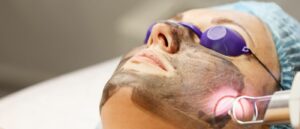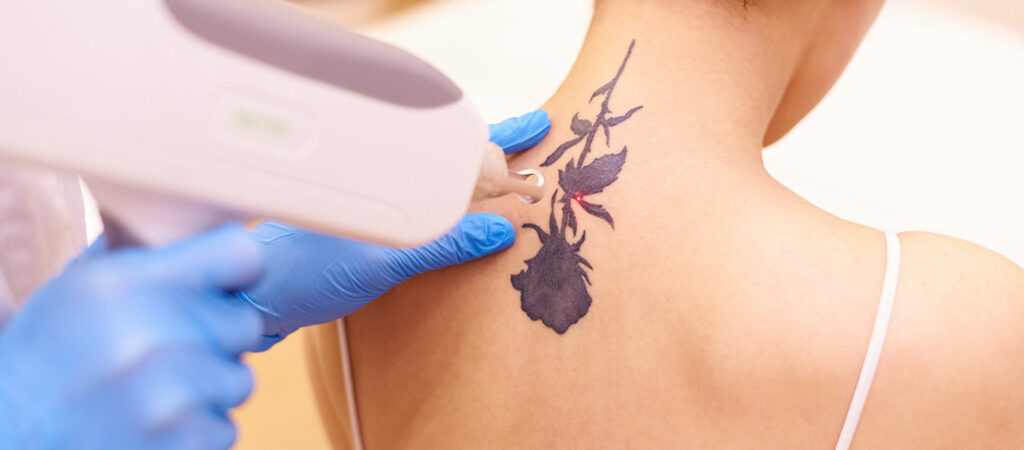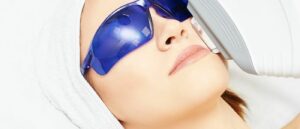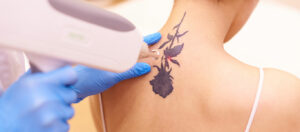
Carbon Facial
CARBON FACIAL £140 Carbon facial (for skin types I-IV) The Carbon Facial is a laser peel which helps to refresh


QSwitched ND YAG Later Tattoo Removal
Tattoo removal lasers are very safe for use when used by a trained laser operator with proper safety equipment (goggles to protect the eyes).
The radiation emitted by a tattoo removal laser is non-ionizing and carries no risk of cancer or other abnormal cell growth.
As we use a green light Nd:YAG laser we can treat a vast array of colours; black, red, brown, orange, blue, purple, and darker green hues. Difficult colours to remove are pastel colours such as; pale blue, turquoise and pink.
Colours we cannot treat; white, yellow, skin tones and UV ink.
Please note that we cannot treat GREEN, as we have a green light laser the ink wont absorb it. However, some older tattoos that are green can possibly be treated as they often were blue and yellow in mixed together (we can lighten the blue and the yellow would be left in the skin).
You will most likely experience some discomfort during the laser treatment and small amounts of pain in the area immediately after; this is due to the heat created from the laser when it shatters the tattoo pigment that is imbedded in the collagen fibres in your skin. The laser technician has ice packs available for you to use to cool down the treated tattoo. As you progress with the laser treatments you’ll find the discomfort and pain will decrease since there is less ink that shatters and creates heat in your skin.
Immediately when the laser is fired at the tattoo your skin will go white which we refer to as frosting of the skin. This happens due to the heat in created in the skin causes water in your skin to evaporate. The frosting of the skin will fade within 10-20 minutes after treatment. Some clients experience pinpoint bleeding and swelling during the treatment too, but it is quite rare.
The next 24-48 hours some clients experience blisters forming due to the heat; this happens mainly in tattoos that have a lot of solid black ink packed densely in the tattoo. If blistering occurs they are to be left alone as they work as your body on plaster to heal the skin underneath. Swelling of the area is to be expected for the first 24-48 hours.
Not normally, It is very unusual to develop any scarring but possible, especially with poor aftercare (there is a reported 5% chance of scarring following tattoo removal treatments). The laser operated at our studio is specially designed for Tattoo Removals and Reduction. The light pulses it emits are only in contact with the skin for literally billionths of a second, there is not enough time for a significant build up of heat in the skin. Scarring following laser tattoo removal is often scars that was made when the tattoo was applied. This is why the laser technician will go through your tattoo and check it before starting any treatment on you. If there are scars present in your tattoo you will be notified of this.
Possibly, modern lasers can give fantastic results but there are no guarantees. Sometimes the total elimination of the tattoo is not possible despite the use of the most advanced tattoo removal equipment. The success of the treatments depends on more than just the type of tattoo ink used as mentioned in the previous question.
There are many factors that can effect treatment results such as:
Tattoos that are carried out by professionals are usually more difficult to remove as they contain more pigment colours and there is usually much more detail in the design. Often with a professional tattoo, the pigment colours are applied more deeply into the skin, and because of this may take more treatment sessions.
This is not to say that amateur tattoos are not applied as deep as professional ones, sometimes amateur tattooists create pocket of inks that are too deep and extremely difficult to eradicate completely.
You may be surprised but there is no recognised international standard for the manufacture of tattoo ink, sometimes inks can be mixed with other unknown compounds. Sometimes these compounds react to laser light and oxidise.
Lightening of the tattoo may continue for several months after the last treatment session.
(UNLESS OTHERWISE ADVISED BY YOUR PRACTITIONER)

CARBON FACIAL £140 Carbon facial (for skin types I-IV) The Carbon Facial is a laser peel which helps to refresh

Frequently Asked Questions WHAT IS IPL HAIR REMOVAL? The IPL hair removal treatments removes the need for regular waxing and

IPL treatments can be used to erase mild sun damage, acne, rosacea, brown spots, freckles or irregular pigmentation on the

QSwitched ND YAG Later Tattoo Removal Nd:YAG lasers can treat 90 – 95% of tattoos, since red and black are